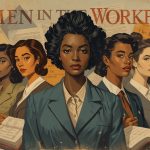Mary Gibson is a British author known for her emotionally rich historical novels set in early 20th-century Bermondsey. Drawing inspiration from her family’s working-class roots, Mary Gibson captures the lives of resilient women facing poverty, war, and personal struggle.

Her most famous works include Custard Tarts and Broken Hearts, The Bermondsey Bookshop, and Gunner Girls and Fighter Boys.
Mary Gibson’s storytelling blends social realism with heartfelt drama, making her a powerful voice in historical fiction.
Mary Gibson | Biography & Background
The renowned British author Mary Gibson is most known for her vivid historical fiction books that are set in the working class area of Bermondsey, South London, where she was born and reared in the early 20th century. Her colorful and emotionally charged sagas vividly represent the streets, factories, and difficulties of London’s past, showing how her strong sense of location and period greatly informs her narrative.
Growing up in a close-knit family, Mary heard tales of hardship, shared spirit, and life throughout the wars.
Her novels later relied heavily from these oral histories, particularly those that were handed down from her mother and mother.
She often states that the primary inspiration for her works came from her mother’s experiences during the war and her grandmother’s life as a factory worker.
These women, who lived through times of great hardship, resilience, and change, form the foundation of many of her characters.
Mary Gibson had a long and successful career in publishing before she started writing fiction. She spent about 30 years working in a variety of abilities, such as production and editing.
Even though she had always loved telling stories, she didn’t allow herself to write full-time until 2009, when she chose to retire early. She started a new chapter in her life with this choice.
Custard Tarts and Broken Hearts, her debut book, was an early hit when it was released in 2013.
Her grandmother’s experience during the 1911 Bermondsey women’s strike served as a basis for the book, which made it to the Kindle Top 10 and was chosen for World Book Night in 2015.
Its success confirmed Mary’s belief that the lives of ordinary working-class women deserved to be remembered and celebrated.
Her later works, such as Jam and Roses, Gunner Girls and Fighter Boys, The Bermondsey Bookshop, A Sister’s Struggle, and Hattie’s Home, were all set in the streets of Bermondsey.
Her dedication to giving voice to women who were frequently disregarded in popular history and her profound respect for the past are evident in each of her novels.
Despite facing social and personal challenges including gender injustice, poverty, war, and domestic abuse, her characters always exhibit courage, love, and resilience.
Strong female heroines, emotional warmth, and honesty are features of Mary’s work. She allows readers to fully immerse themselves in the era by fusing emotional storytelling with careful historical research.
To add to the reliability and depth of her writing, she often brings in actual places, occasions, and even historical people (such as Ethel Gutman in The Bermondsey Bookshop).
Mary Gibson still writes now and uses her moving tales to encourage people. She frequently receives invitations to talk at historical companies book clubs, and literary festivals.
Her narrative shows that it’s never too late to pursue your passion and that tales based on personal experience and local history have the power to move people all around the world.
Mary Gibson | Famous Works
1. Custard Tarts and Broken Hearts
This tale, which is set in 1911 Bermondsey, is around Nellie Clark, a strong and strong young woman who works at a jam factory.
She takes care of her younger siblings while working long hours in poor conditions for no pay, all while being watched over by her violent father.
Nellie becomes involved in the historic Bermondsey women’s strike as the factory women start to speak out against these injustices.
Even though she is becoming stronger, Nellie still has issues with emotion. While seeking to stay loyal to her values, she falls in love with Sam, a charming but deceitful man.
Nellie is forced to make tough decisions that put her independence, love, and loyalty to the test as World War I near.
The narrative blends female empowerment, labor rights, and romance, showing how one woman’s voice may inspire many.
Mary Gibson’s vivid portrayal of factory life and the suffragette era is both personal and political, capturing the energy and pain of a community on the edge of change. This book is a tribute to the working-class women who fought for respect and better lives.

2. Jam and Roses
This book, which is set in the 1920s, centers on the three Page sisters, Milly, Elsie, and Amy, who live in the slums close to the London docks.
The sisters grow up quickly and have their own struggles because their father is sometimes angry and intoxicated, and their mother is overburdened. Amy yearns for independence, Elsie dreams of love, and Milly works to keep the family together.
Both adversity and hope shape their fates. Everything changes as new chances and romantic interests arrive, especially as old secrets start to come to light.
They discover true sisterhood as they work in food factories—standing together in the face of adversity.
This is a story of family, loyalty, and survival, steeped in the rich details of working-class life in post-war Bermondsey.
With emotional and social realism, Gibson brings to life the struggles and small victories of women determined to build better futures.
The novel touches on domestic abuse, female solidarity, and the importance of resilience.

3. Gunner Girls and Fighter Boys
In this gripping WWII book, Cassie Taylor abandons her peaceful life to enlist in the Auxiliary Territorial Service (ATS) and undergo gunnery training in order to aid in the defense of London during the Blitz.
Billy Jenkins, a buddy from her youth, enlists in the RAF in the meantime. As tragedy, duty, and love get in the way, their paths during the conflict intersect and diverge.
Cassie’s evolution from a timid young woman to a strong, brave adult is admirable. She confronts peril head-on, gains self-control and discipline, and joins a close-knit group of women who risk their lives every day.
She learns her true potential through heartbreak, explosions, and blackouts.
Billy, however, struggles in the air and deals with his own moral and mental issues. In addition to being a love story, theirs is a narrative of bravery, personal development, and the price of war.
Gibson honors the unsung women of WWII by weaving their tales with genuine historical context.
By striking a balance between action and emotional depth, the book provides a realistic depiction of life both at home and on battlefield.
It honors the spirit of war, love in the face of adversity, and the resilience of unexpected people.
4. The Bermondsey Bookshop
The narrative of Kate Goss, a bright young lady caught in a world of abuse and poverty, is told in this book, which was inspired by the actual Bermondsey Bookshop that opened its doors in 1921.
She finds a world of ideas, camaraderie, and self-worth after a fortuitous meeting brings her to the bookstore.
Kate finds work and a sense of purpose under the direction of the shop’s founder, Ethel Gutman.
Her existence outside of the bookshop, however, is still perilous and secretive. She has to deal with her own traumatic past, betrayal, and a complicated romance.
The tension between her old and new worlds increases as she starts to dream of a better being.
This is a story of transformation, knowledge, and hope. The bookshop becomes a symbol of possibility, showing how access to education and community can change a life.
Mary Gibson beautifully captures the historical importance of literacy, especially for women in working-class areas.

The novel is filled with strong female characters, compelling dialogue, and a strong sense of time and place. It’s a reminder that books can be lifelines, and that courage often starts in the quietest places.
5. Hattie’s Home
Hattie’s Home, which is set just after World War II, centers on Hattie, a kind but independent woman who returns to her former Bermondsey neighborhood.
She returns from the tragedy of war with the intention of starting over as a Welfare Officer, assisting families and challenging youngsters.
However, she quickly encounters a shattered community tainted by secrets, poverty, and sorrow.
Hattie must face her own emotional scars and an unresolved connection from her past while working to assist others.
Those who distrust her or wish to keep things hidden oppose her attempts to provide stability and hope. She still hasn’t given up on the people or the location she used to call home, though.
The book pays poignant homage to the silent heroes who attempt to mend broken lives, the value of social care, and post-war healing.
It shows Mary Gibson’s capacity to give regular women dealing with enormous challenges depth and dignity.

6. A Sister’s Struggle
We meet Louisa, a young woman in 1930s Bermondsey who is weighed down by social constraints and family responsibilities, in A Sister’s Struggle.
She has to work long hours and provide for her younger siblings after losing her parents. She seems to be unable to fulfill her aim of becoming a teacher.
Louisa refuses to live the life that society expects of her in spite of the struggles she faces on a daily basis.
In the face of injustice, betrayal, and romantic failure, she battles for authority and education. But she keeps going because of her strength, intelligence, and willpower.
Class disparity and pre-war tension serve as the setting for this tale of female confidence, ambition, and hope. Mary Gibson depicts a woman’s battle to overcome obstacles and establish her own identity.

7. Bourbon Creams and Tattered Dreams
This book, which is set in the 1920s, centers on Kitty, a young woman who must take care of her younger siblings after losing her mother.
Financially and mentally struggling, Kitty starts working at a Bermondsey biscuit factory where she gets sucked into a world of romance, gossip, and hard work.
Kitty hopes for more while working to keep her family together. Love, treachery, and a return of a former romantic partner who poses a threat to her future complicate her path. She discovers that sometimes the most unexpected sources of power can be found.
With warmth and sincerity, this tale examines working-class resiliency, female friendship, and household duties.
Gibson paints a detailed picture of factory life and the emotional weight carried by young women in post-WWI Britain.

8. A New Dawn Over Mulberry Lane
This touching conclusion of the Mulberry Lane series takes us back to a group of resilient women in London in the 1950s who are starting again.
The narrative centers on Janet, Maureen, and Peggy, three women trying to adjust to life after the war while facing personal obstacles.
The book depicts a period of change and hope, from strained marriages to shifting societal roles and economic turmoil. The ability to adapt, community support, and the connection between women are major themes.
Themes
| Novel Title | Themes |
| Custard Tarts and Broken Hearts | Working-class struggles, female empowerment, labor rights, family bonds, love amidst hardship, resilience |
| The Bermondsey Bookshop | Social mobility, education, women’s independence, love vs duty, ambition, class divide |
| Jam and Roses | War and its impact on families, sisterhood, poverty, sacrifice, hope, survival |
| The Bermondsey Bookshop | Social mobility, education, women’s independence, love vs duty, ambition, class divide |
| Bourbon Creams and Tattered Dreams | Orphanhood, dreams vs reality, class differences, friendship, emotional endurance, rebuilding life. |
Conclusion
In conclusion, Mary Gibson’s novels shine a light on the strength, courage, and endurance of ordinary women in extraordinary times.
Through vivid settings and heartfelt narratives, she preserves the spirit of working-class London.
Mary Gibson continues to inspire readers with stories that are both historically grounded and emotionally powerful.
FAQ’s
It follows Kate, a young woman from poverty, who finds purpose and hope through working at the Bermondsey Bookshop.
Famous people born in Bermondsey include Michael Caine and actress Maxine Audley.
The novel The Bermondsey Bookshop by Mary Gibson is inspired by real events but is a work of historical fiction.
It was a real bookshop founded in 1921 by Ethel Gutman to provide books and education to working-class women.
Related Posts
Arcane Society by Jayne Ann Krentz | Detailed Review
The Heritage of Lancaster County Series by Beverly Lewis | Amish Books
“They Say / I Say” | Gerald Graff, Cathy Birkenstein
The War of Art Quotes by Steven Pressfield | 120 Best Quotes









